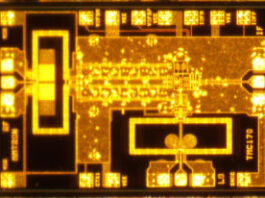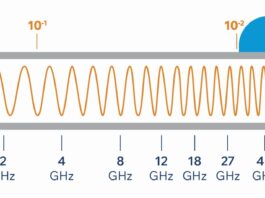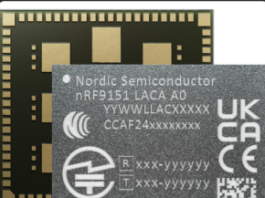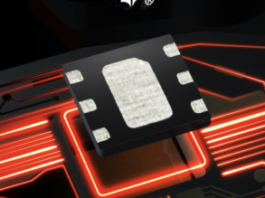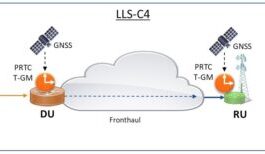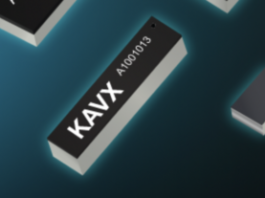
Learn about the evolution of a SIM card to the creation, use, and function of the eSIM.
Subscriber Identity Module (SIM) cards add cost and take up valuable space inside devices. In phones, some people have trouble handling them anyway. If you’ve ever dropped a SIM card, you know about that. eSIM devices eliminate those cards. For IoT devices, that means users can switch carriers without the need to send a person to a remote site to swap a card. How did eSIM evolve from SIM cards and why. Let’s explore.

Figure 1. SIM card sizes have shrunk, and that trend continues with eSIM.
What is a SIM card?
A removable SIM card is a small chip contained in nearly all cell phones and cellular-connected IoT devices. The SIM card’s function is to store information that enables a cell phone to communicate with its carrier’s cell towers. If the SIM card is removed from a phone, the ability to text, call, or access information on the internet, would not be possible. Figure 1 shows that SIM cards come in different sizes.
iPhones — except iPhone 14 models sold in the U.S. — have a SIM tray.
Enter eSIM
An eSIM takes the chip out of its card. It’s usually soldered directly to a device’s PC board. That saves precious space, enabling such things as increasing battery sizes. The eSIM can be programmed and re-programmed remotely though software when a user wants to change carriers for phone mumbers.
One good example of the SIM use is an Apple eSIM on the iPhone 14, which lets a user activate any cellular plan provided the eSIM isn’t locked on a single network. Users can program eight or more eSIMs on an iPhone and switch between two phone numbers at the same time.
GSMA and eSIM
eSIM is a global specification, issued by the GSMA, that enables remote SIM provisioning of any type of mobile device.
Moving from Removable SIM to eSIM provided many benefits:
- eSIM has the same level of security as the removable SIM.
- Device end users benefit with from easy management of subscriptions and connections. There is no longer need to manage multiple SIM cards.
- eSIM allows remote management of subscriptions for organizations
- Distributors now have simplification of logistics and customization is reduced for regional areas and specific operators.
- Operators can now simplify expansion of their businesses in emerging markets such as consumer electronics, wearables, and automotive just to name a few.
- Manufacturers of devices can benefit by the reduced space in their product designs leading to smaller devices. Devices can also now be made airtight to resist dampness, vibration, and temperature.
- The GSMA announced the first eSIM Security Certification on July 19, 2022.
The IoT was one of the reasons that the eSIM card was ushered into existence. The eSIM was small and did not need a slot in devices because it is an embedded chip, hence the name “eSIM.”
We are told that by 2025, approximately 4 billion to 5 billion smartphone connections will be using eSIM cards from the M2M/B2B IoT and consumer markets.
eSIM applications
Mobile phones
The newest iPhone, iPad, Samsung, Oppo, and Pixel smartphone models are just a few examples having eSIM capability. eSIMs have many benefits, which include highly efficient subscription management, along with seamless remote connectivity, over a product’s lifecycle. This greatly benefits fast-growing product sectors in large IoT deployments such as smart meters.
eSIM benefits include easier changing of service providers without changing phones or SIM cards because they can be reprogrammed through the phone. International travel with a smart phone with an eSIM no longer requires replacing the eSIM like the original SIM devices did.
IoT
The IoT is continuing a digital transformation that is enabling more device connectivity. This is leading to the job of interfacing with many, many Connectivity Service Providers (CSPs) who need roaming agreements to connect their devices in a multitude of countries. Such businesses need an easy, secure method to connect devices, especially one with the benefits of using only one SKU, which can eliminate extra supply chain costs.
Transportation and Mobility
A dynamic eSIM environment provides the necessary flexibility to automatically and dynamically enable devices that will be able to connect virtually to any cellular network, without that device having to travel across a city, country, or border.
Service providers
eSIM technology service providers are now able to simplify a device activation while also saving time and cost. Here is how.
- Remote management: Technicians will no longer need to travel to sites to update SIM cards and devices when the Mobile Network Operator (MNO) contracts expire.
- Simplification of the manufacturing process and logistics: Using eSIM devices enable devices installed via a service provider to connect to any MNO. This eliminates the need to manufacture multiple product variations that can support various different networks.
- Streamlining installations: Devices with an eSIM will automatically choose the best MNO for each deployment site. This eliminates technicians traveling many travel hours going to various sites to test devices for their connectivity needs.
Conclusion
eSIM, and its successor integrated SIM (iSIM), have positioned themselves as part of the range of capabilities that designers need to consider when planning a cellular-based IoT product. Moving away from a plastic removable SIM has led to a requirement for Remote SIM Provisioning (RSP) that manages the profiles on the device.
Benefits to the consumer will be a much easier device setup because there is no longer a need to insert or replace a SIM card. Plus, there is a range of new mobile-connected devices from which the consumer can choose; devices will be able to operate independently of a smartphone.
Integrated SIM (iSIM) will be thoroughly discussed in detail in our next article.
References
-
- Using eSIM and iSIM will save money for IoT deployments, Quectel.
- IoT Connectivity – Understanding the role of SIM and eSIM in IoT, Thales.
- How eSIM can help you with your connectivity needs, thalesgroup.com
- Thales Smart Profile Manager
Solving permanent roaming challenges through eSIM and localization, Kaleido Intelligence

